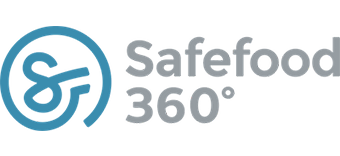Working your way towards a better food safety management system
Have you noticed that sometimes in life we don’t get to do something that objectively would be the right thing to do? Especially in business, it happens all the time that there is a new, better way of doing things, but some organizational forces prevent us from achieving positive change. This is because systems and organizations have inertia. Inertia is the force that fights change and tries to keep things the way they are.
In this post, I’m going to break down some of the forces that are preventing you from changing your food safety management system for the better. I will also point out some tools that can help you get to where you want to be. As a food safety management software company, we think about change from the perspective of your food safety management systems, but these same lessons are universal and can be applied in any other discipline as well.
Be prepared to fight an uphill battle
Okay. You’ve noticed something about your food safety management system that could be done in a better, more efficient way. You even have an idea how you can solve the challenge. You get excited, you dream of a better tomorrow, and… Be prepared to fight an uphill battle.
There are many ways to analyse the forces that are against you and change, but we could group them into two categories:
- Inertia: Tolerance for good enough, general resistance to change, politics, personal relationships, culture, lack of know-how, etc. In principle, you could say that inertia often relates to the internal state of people.
- Other forces: Approval processes, purchasing processes, existing contract, etc. These are often actual tasks that you need to do.
There are obviously dozens of other things we could consider here, but for the purpose of this blog, these two categories are sufficient. The most important thing to note is that you will not only have to overcome obstacles like office politics and resistance to change, but you will also have to deal with approvals and other processes. When you want to change your food safety management system, it’s not going to be at the flick of a switch.
We have a bias towards action – and it’s both good and bad
Which one do you think is worse: A) A medical doctor can’t make up his mind on the treatment and the patient dies, or B) A doctor tries a new treatment and the patient dies. The outcome is the same, but in this case, we tend to think that the doctor B did worse because his actions actively might have contributed to the outcome.
This is why, many times, organizations don’t bother trying to change. It’s just much safer to sit still and not to make any noise, than to go out and actually try something different! The bigger the organization, the more politics there is, the harder it is to get something going.
You first need to change the minds of enough people
As you can see from the illustration, you will first need to convince enough people that your current system is not working as well as it could. It is only after enough people are ready to explore alternatives in a serious way that you can start fighting the other battles.
What we learn many times is that individual people recognize the need for change early on, and they might take the first steps towards change by contacting us for instance. But the initiative never goes anywhere because the organization is just not ready, collectively, for that change.
Once you have changed the mindset you will still need to get through the process
Inertia and resistance to change will peak before the change process is over. You will, however, have to deal with other issues even after you have people on board mentally. Purchasing processes, vetting, decision making, research, approvals – all of that still needs to be done.
How can you facilitate change?
Coming back to the picture again, you can see that there are two forces to fight: Inertia and Processes.
- Lower the inertia: You can do things that lower the inertia – for instance, you can start communicating to your people the cost of NOT changing. You can remind people about how their perception about the risks and difficulty relating to change might not be correct after all.
- Make change processes easier: You can try to positively influence the processes that are related to change by appealing to upper management and making it easier to get initiatives through. In our experience, many big companies want to change but the processes required to introduce even modest changes – like introducing a new supplier – can be off-putting enough for most people to not even bother getting started.
- Push for change: You can work continuously to keep pushing the change on different fronts.
- Create incentives for change: You can create a pull for change by setting incentives that win everyone over to the new system.
You need to win over 30-40% of the top three layers
What we have learned from lean manufacturing is that in order to make an ideology, a program or an initiative stick, you need to win over at least 30 to 40% of the top three layers of your organization.
This doesn’t necessarily mean that you have to win over the board of directors, but rather the top three layers of the relevant branch in your organization. In a large food business, this could mean involving the Director of Quality and the two layers below her/him.
Friction means you will need to keep working for it
All systems have inertia that resists change, but all systems also have friction – or entropy – that wants things to stop happening. Laziness, need for maintenance, and need for input – these things want to stop systems from going any further in the first place.
Even if you have met your soul mate, you know that you need to keep on working on your relationship. You can’t start taking the other person for granted. It’s the same for business systems. Even the best system in the world is not going to be completely self sustained without inputs and ongoing efforts from you: if it was that independent, the system would actually be able to replace you!
We hope these tips will help you work towards a better food safety management system, and manage change in general. What do you think? Have you noticed inertia slowing your initiatives or change down?





Leave a Reply
Want to join the discussion?Feel free to contribute!